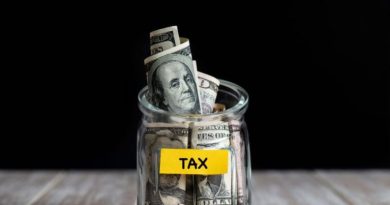The evaluation process plays a pivotal role in education, serving as a yardstick to measure the advancement and comprehension of students. However, the ongoing reliance on standardized testing as the primary evaluative tool has ignited a burgeoning discourse.
Many scholars posit that standardized testing is constricting, inequitable, and fails to authentically depict the breadth of students’ capabilities. Consequently, there arises an imperative to reassess evaluation strategies and delve into alternative methodologies.
The mechanics of standardized testing encompass employing uniform assessments universally administered to all students, typically adopting a multiple-choice format. Despite providing a standardized benchmark for comparing students’ performance, these tests harbor myriad constraints.
A significant apprehension lies in their emphasis on mere rote memorization and the regurgitation of information. This narrow approach neglects the evaluation of crucial skills such as critical thinking, problem-solving acumen, creativity, and collaborative prowess—attributes indispensable for contemporary success.
The Inequity Inherent in Standardized Testing
Standardized tests routinely fall short in accommodating the diverse backgrounds and experiences of students. These assessments often exhibit biases toward specific cultural and socioeconomic cohorts, thereby placing students from underprivileged communities at a distinct disadvantage.
This inherent bias undermines the fundamental tenet of education, which seeks to furnish equal opportunities for all students to flourish. Moreover, the strain associated with high-stakes standardized testing can precipitate heightened stress and anxiety among students, further jeopardizing their performance.
Exploring Diverse Evaluation Modalities
To transcend the confines of standardized testing, educators and policymakers are actively probing alternative avenues that promise a more comprehensive and precise evaluation of students’ capabilities.
One such paradigm is performance-based assessment, entailing the evaluation of students’ knowledge and skills through real-world scenarios, projects, and presentations. This approach cultivates an environment wherein students can showcase their understanding within a practical context, thereby fostering critical thinking and problem-solving proficiencies.
The Efficacy of Portfolio Assessment
Another efficacious alternative is the adoption of portfolio assessment. This methodology requires students to curate a compendium of their work over an extended duration, serving as a testament to their developmental trajectory.
Portfolios encompass diverse forms of student output, including essays, projects, artwork, and presentations. By holistically scrutinizing the portfolio, educators gain profound insights into students’ capacities, evolution, and areas ripe for improvement.
Peer and Self-Evaluation as Valuable Instruments
In tandem with instructor-led assessments, peer and self-evaluation emerge as valuable instruments in the evaluation toolkit. Peer evaluation entails students assessing and furnishing feedback on their peers’ work, fostering active participation in the learning process and instigating a sense of shared responsibility and collaboration.
Self-assessment prompts students to reflect on their own performance, discerning strengths and weaknesses, and delineating goals for improvement. These introspective exercises fortify students’ metacognitive skills, enabling them to take ownership of their educational journey.
Real-world and Authentic Evaluations
To better equip students for the demands of the real world, evaluations should mirror authentic scenarios and tasks. Authentic evaluations necessitate students to apply their knowledge and skills in resolving practical problems or executing meaningful projects.
This approach not only gauges their comprehension but also imparts the skills requisite for success beyond the confines of the classroom. Instances of authentic evaluations encompass simulations, case studies, and internships.
Harnessing Technological Advancements in Evaluation
The advent of technology introduces novel prospects in the realm of evaluation. Technology-enabled assessments offer immediate feedback, adapt to individual learner needs, and facilitate more engaging and interactive evaluation experiences. Online quizzes, interactive simulations, and virtual reality assessments exemplify how technology can augment the evaluation process.
Striking a Harmonious Balance
While the imperative to move beyond standardized testing is undeniable, it is equally pivotal to strike a judicious balance between standardized and alternative evaluations. Standardized tests retain utility when applied judiciously, such as measuring system-wide performance or pinpointing achievement gaps.
Nonetheless, they should not constitute the exclusive yardstick for evaluating individual students’ capacities. Embracing an array of evaluation methods, including performance-based assessments, portfolios, peer and self-assessments, authentic evaluations, and technology-enabled assessments, affords a more holistic and accurate comprehension of students’ capabilities.
In Conclusion
The imperative to reconceptualize evaluation is paramount for the cultivation of a more inclusive and efficacious education system. Moving beyond the confines of standardized testing and embracing alternative paradigms, such as performance-based assessments, portfolio evaluations, peer and self-assessments, authentic evaluations, and technology-enabled assessments, unfurls new horizons in the evaluation landscape.
Through the integration of these strategies, we can furnish a comprehensive evaluation framework that nurtures critical thinking, problem-solving, and collaborative adeptness—skills indispensable for 21st-century success.




